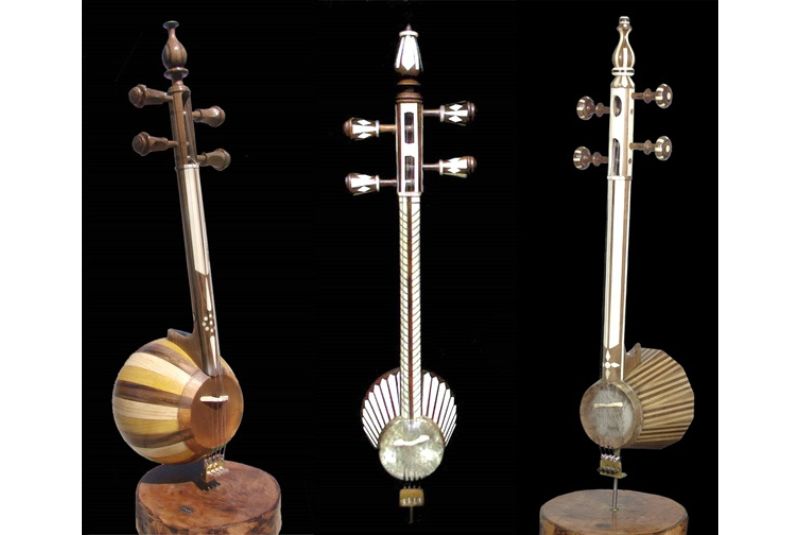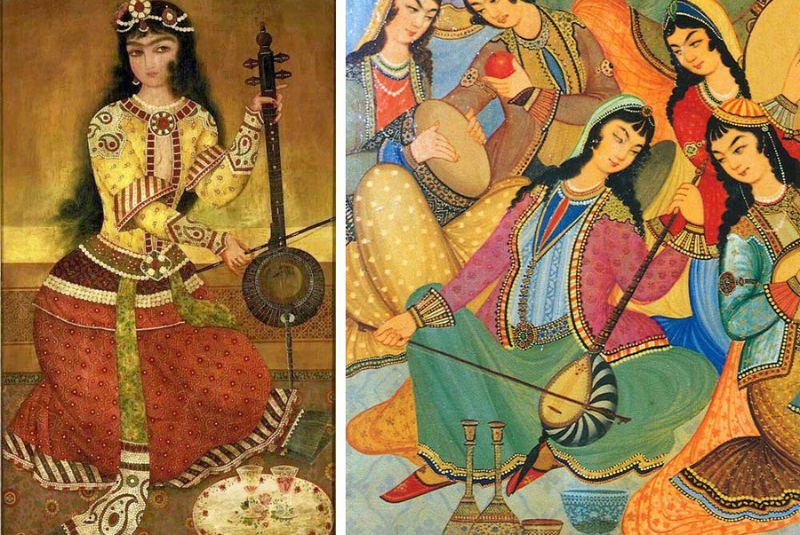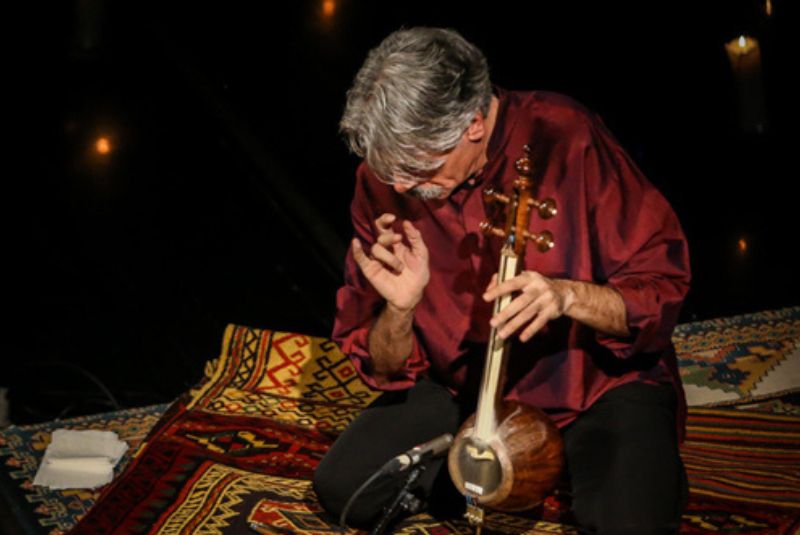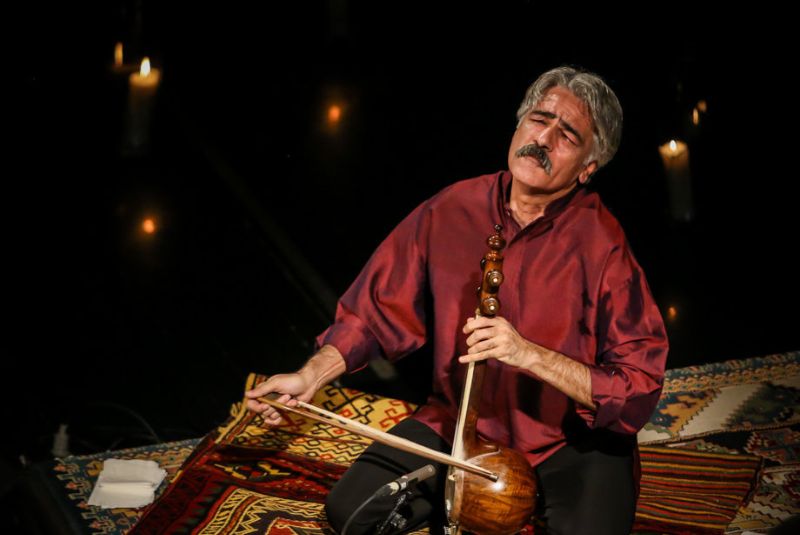Kamancheh: Iranian Musical Instrument
Music is the universal language of the soul and has the incredible power to touch our hearts, uplift our spirits, and transport us to realms beyond the ordinary.
If you are a traditional music lover and have experienced or would like to experience the profound beauty of traditional Iranian music, this is an excellent opportunity to learn, study, and master one of the famous Iranian traditional musical instruments.
The Persian Kamancheh is a violin-like instrument that enchants listeners with its evocative sound produced by drawing a bow across its strings.
Kamancheh is also an integral part of Iranian music and is cherished in various countries, including Armenia, Azerbaijan, Turkey, Uzbekistan, and Turkmenistan. It was included in Azerbaijan and Iran's UNESCO Intangible Cultural Heritage List in 2017.
In this blog, we will explore the rich history, cultural significance, and features of the Kamancheh and mention famous Iranian artists who have mastered this unique instrument.
History of Kamancheh

Kamancheh is known as an ancestor of the violin and is among the most revered musical instruments in Persian and Central Asian traditions. The name "kamancheh" originates in the Persian language, with its literal translation meaning "little bow."
The term is derived from two Persian words: "kæman," which signifies "bow," and "-cheh," a diminutive suffix. This name aptly describes the instrument as it is played with a bow.
The origins of the Kamancheh instrument can be traced to the Safavid and Qatar periods, which they used in their celebrations and artistic expressions.
In addition, references to the Kamancheh can be found in works illustrated during the Mongol and Timur periods, further highlighting its presence throughout history.
Though the Kamancheh's roots can be traced back to Central Asia, its significant development occurred in Azerbaijan during the 19th century. During the Ottoman period, Kamancheh made its way to Turkey and later to Europe and Africa.
Legends on Kamancheh’s Origin
According to rumors and folklore, the Kamancheh instrument is believed to be one of the earliest stringed instruments. Legends describe its emergence in the following manner: as birds of prey, such as eagles, hawks, or storks, caught and flew away with their hunted animals, the intestines of those animals would hang from tree branches. Resourceful individuals would then utilize these animal intestines to create instruments resembling hooks and harps. Eventually, this led to the development of plucked and bowed stringed instruments, including the Kamancheh.
Kamancheh in Literature and Art

Musical instruments can profoundly touch the human soul, transcending mere auditory experiences and finding expression within art and literature. This convergence of music and literature is evident in the works of great Persian poets, who skillfully employed the language of musicians and their instruments to convey profound emotions and narratives of the past.
Among these poets, Masoud Saad Salman, an esteemed figure of the eleventh century, incorporated the enchanting name of the Kamancheh within his verses.
Similarly, Farrukhi Sistani, another esteemed poet of the eleventh century, immortalized the Kamancheh within the lines of his works. In his evocative poetry, he painted vivid scenes where the Kamancheh, alongside other musical instruments, played a significant role in creating a daily ambiance filled with glory and prosperity.
Moreover, Kamancheh has been portrayed in the paintings of Chehel Sotoun Palace in Isfahan, where Kamancheh players were displayed as royal court musicians. In another image at Hasht Behesh palace in Isfahan, a woman is depicted playing the instrument, showing the influence of the Kamancheh, not only in music but also in the realms of visual art and the collective memory of a nation.
Different Parts of Kamancheh and Their Functions

The classic Kamancheh is a small musical instrument with a half-pear-shaped body. It is usually crafted from a piece of wood and features an elliptical screw "head" and a stem "neck." The instrument's chest bears two large D-shaped holes with rounded edges facing outward. It also has a groove on the back.
In addition, it possesses many other unique and intricate features that contribute to its enchanting sound. Here are all the different parts of an Iranian Kamancheh:
- Resonating Box: The Kamancheh consists of a resonating box, which serves as the main body of the instrument. Typically, the resonating box has a spherical or oval shape with a small flat base.
The resonating box is crafted from wood and can be constructed as a single piece or assembled from several pieces, depending on the specific type of Kamancheh. The dimensions of the box, including its diameter, may vary based on the desired instrument type, with craftsmen often utilizing walnut wood due to its superior sound qualities.
- Skin: The top surface of the Kamancheh's resonating box is covered with goat or deerskin. Different types of skin produce distinct sounds, allowing artisans to select the desired tonal characteristics for the instrument carefully. The choice of skin and its meticulous attachment to the resonating box significantly contribute to the overall sound quality and resonance of the Kamancheh instrument.
- Bridge (Kharak): The bridge is a small yet robust piece positioned on top of the skin. It takes on a rectangular cuboid shape, featuring grooves that create equal distances between the strings in an oblique manner. This unique design results in the first string being shorter and the last string longer than the others, facilitating optimal sound production and tonal balance.
- Neck: The neck of the Iranian Kamancheh is crafted from a single piece of wood. Iranian craftsmen adhere to specific size and proportion standards known as the Iranian standard for Kamancheh. These meticulous measurements ensure that the neck and the resonating box harmonize perfectly, ultimately influencing the instrument's sound quality.
- Headstock (Sarpanjeh): The headstock is attached to the top part of the Kamancheh's neck. It extends the length of the neck and provides space for the installation of the tuning pegs. The headstock plays a crucial role in maintaining the proper tension and alignment of the strings.
- Tuning Pegs (Gushy): Iranian Kamanchehs feature four tuning pegs located on either side of the top part of the neck. These pegs secure the strings to the instrument and allow for precise tuning. By adjusting the tension of the strings using the tuning pegs, musicians can achieve the desired pitch and maintain proper intonation.
- Nut (Sheytanak): The nut is a narrow, grooved object positioned between the headstock and the neck. The Kamancheh strings are threaded through these grooves and tied to the tuning pegs, ensuring stability and proper alignment of the strings.
- Tailpiece (Simgir): The tailpiece is installed at the farthest part of the resonating box. The tailpiece is uaually crafted from wood or metal, and it securely anchors the lower ends of the strings, contributing to their stability and resonance.
- Strings: The strings of the Kamancheh are a vital component of its sound production. While older instruments may have had two strings on the neck, modern Kamanchehs typically feature three strings. These strings are attached at the top of the neck and extend all the way to the upper surface of the resonating box.
How to Play Iranian Kamancheh

The Iranian Kamancheh is renowned for its exceptional sound quality. Musicians worldwide appreciate the pleasing and captivating tones produced by this instrument. Let us delve into techniques involved in playing the Kamancheh:
First and foremost, a Kamancheh player typically positions themselves on a chair, with the resonating box resting either on the ground or on their knee. With the kamancheh bow in hand, the musician delicately slides the bow's horsehair onto the strings, all the while using their other hand to manipulate the position of their fingers on the strings, thereby adjusting the sound and tuning of the instrument.
It is important to note that playing the Iranian Kamancheh requires a specific skill set and deep musical expertise. The musician must attentively grasp musical notes, melodies, and the nuances within each song while performing. Before commencing a musical piece, it is crucial for the musician to tune the instrument meticulously. The ability to produce bass or treble sounds with the Kamancheh demands particular skill, which is honed over time through practice and dedication.
Famous Iranian Kamancheh Players

Iranian artists and musicians hold a profound appreciation for this instrument, and it remains a prominent feature in various traditional Iranian music festivals held throughout the year. Here are some famous Iranian musicians who played Kamanche: Mehdi Bagheri, Tahmouris Pournazeri, Ali-Asghar Bahari, Saeed Farajpouri, Kayhan Kalhor, Ardeshir Kamkar, and Sohrab Pournazeri. Among all the notable Iranian musicians who have mastered the art of playing the Kamancheh, several have achieved international acclaim, including Kayhan Kalhor who has been nominated for a Grammy award.
Bottomline
The Kamancheh musical instrument has a rich history dating back centuries. It has woven itself into the fabric of Iranian and Asian cultures. Its melodic allure and expressive capabilities have not only earned it a place of prominence in traditional music but have also inspired poets and writers throughout the ages. Today, Kamancheh continues to remind us of the profound power that music holds in shaping our shared human experience.


Comment
Leave a Comment